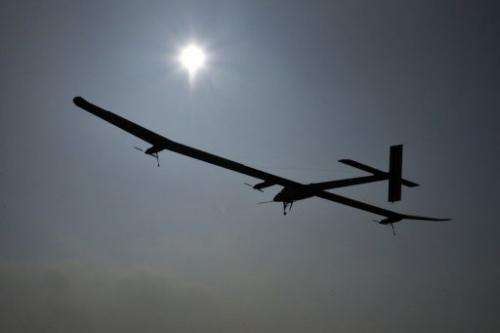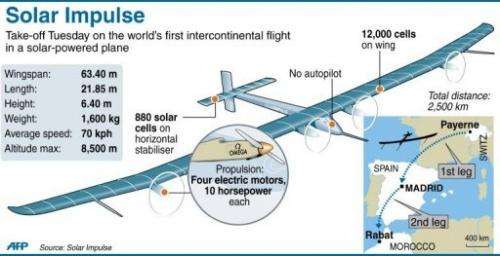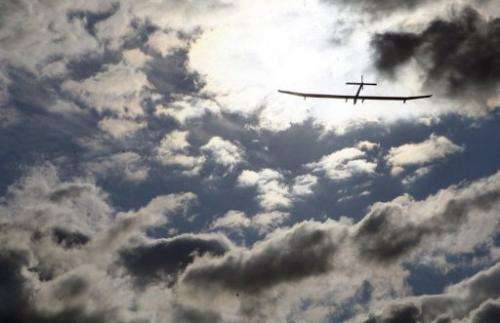Pilot takes off on first solar-powered intercontinental trip (Update)

A Swiss adventurer took off Tuesday into the night skies above Madrid and headed for Rabat on the world's first intercontinental flight in a solar-powered plane.
Bertrand Piccard, 54-year-old psychiatrist and balloonist, piloted the Solar Impulse plane, a giant as big as an Airbus A340 but as light as an average family car, on the daring voyage from Europe to Africa.
As he guided the experimental plane almost silently aloft from Madrid-Barajas airport at 5:22 am (0322 GMT), a red light could be seen disappearing into the moon-lit sky.
An onboard camera relayed pictures of the Spanish capital's quiet streets stretched out below the aircraft, which has 12,000 solar cells in the wings turning four electrical motors.
Helped by a tailwind, Piccard gradually piloted the plane towards 3,600 metres (11,800 feet) as he headed to Seville in southern Spain.

He was then to cross the Gibraltar Strait at 8,500 metres (28,000 feet), enter Moroccan airspace over Tangiers and land in Rabat-Sale some time after 11 pm (2200 GMT).
All that, without using a drop of fuel.
Each of the motors on the carbon-fibre plane charges 400-kilogram (880-pound) lithium polymer batteries during the day, allowing the aircraft to carry on flying after dark.
Piccard, who made the world's first non-stop round-the-world balloon flight in 1999 together with Briton Brian Jones, took over the controls from project co-founder Andre Borschberg, a 59-year-old Swiss executive and pilot.
Borschberg flew a first leg from Payerne in Switzerland, landing in Madrid on May 25.

Organisers said the trip, 2,500 kilometres (1,550 miles) overall, is timed to coincide with the launch of construction on the largest ever solar thermal plant in Morocco's southern Ouarzazate region.
The voyage also is intended as a rehearsal for the plane's round-the-world flight planned for 2014.
The aircraft made history in July 2010 as the first manned plane to fly around the clock on the sun's energy.
It holds the record for the longest flight by a manned solar-powered aeroplane after staying aloft for 26 hours, 10 minutes and 19 seconds above Switzerland, also setting a record for altitude by flying at 9,235 metres (30,298 feet).
(c) 2012 AFP





















